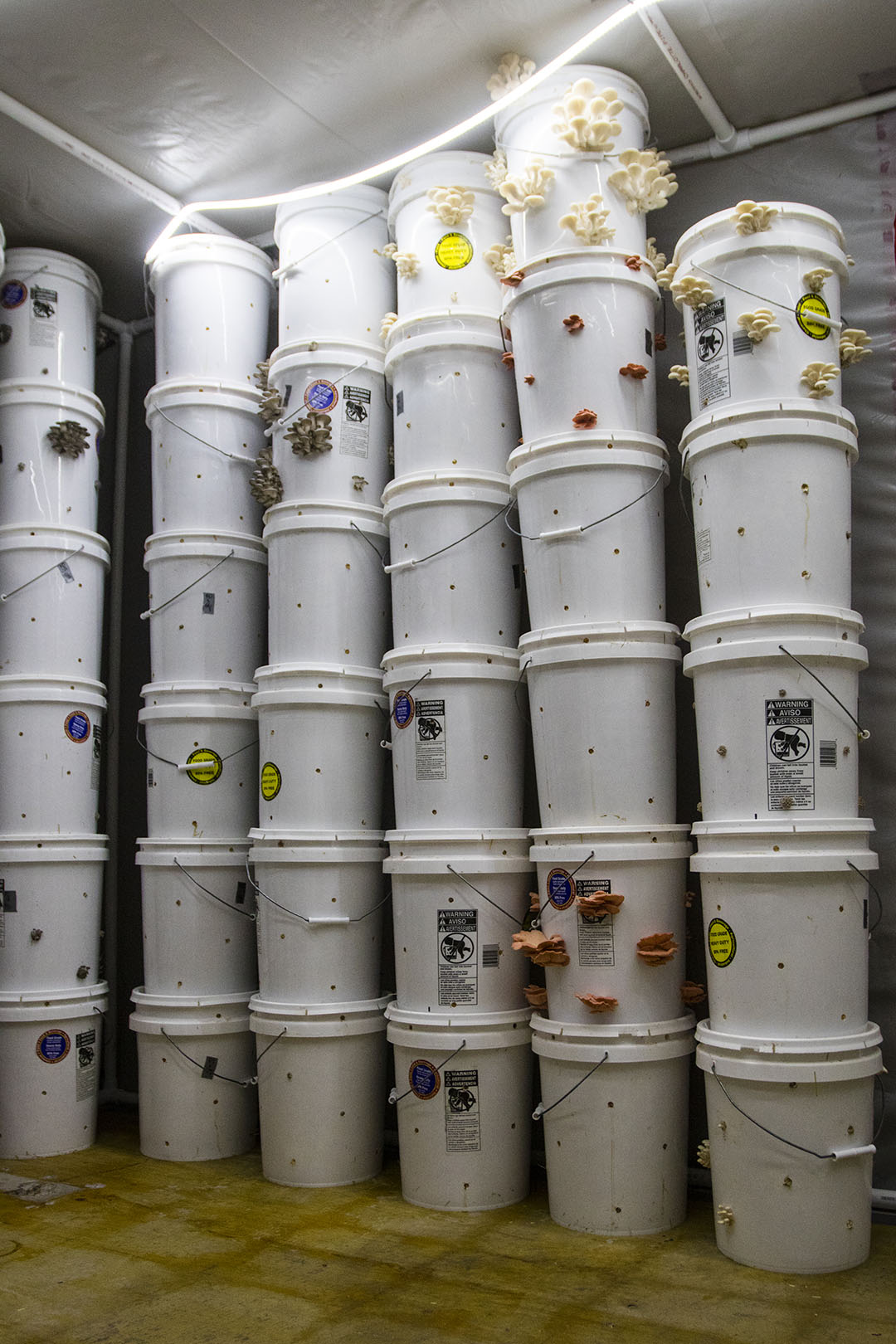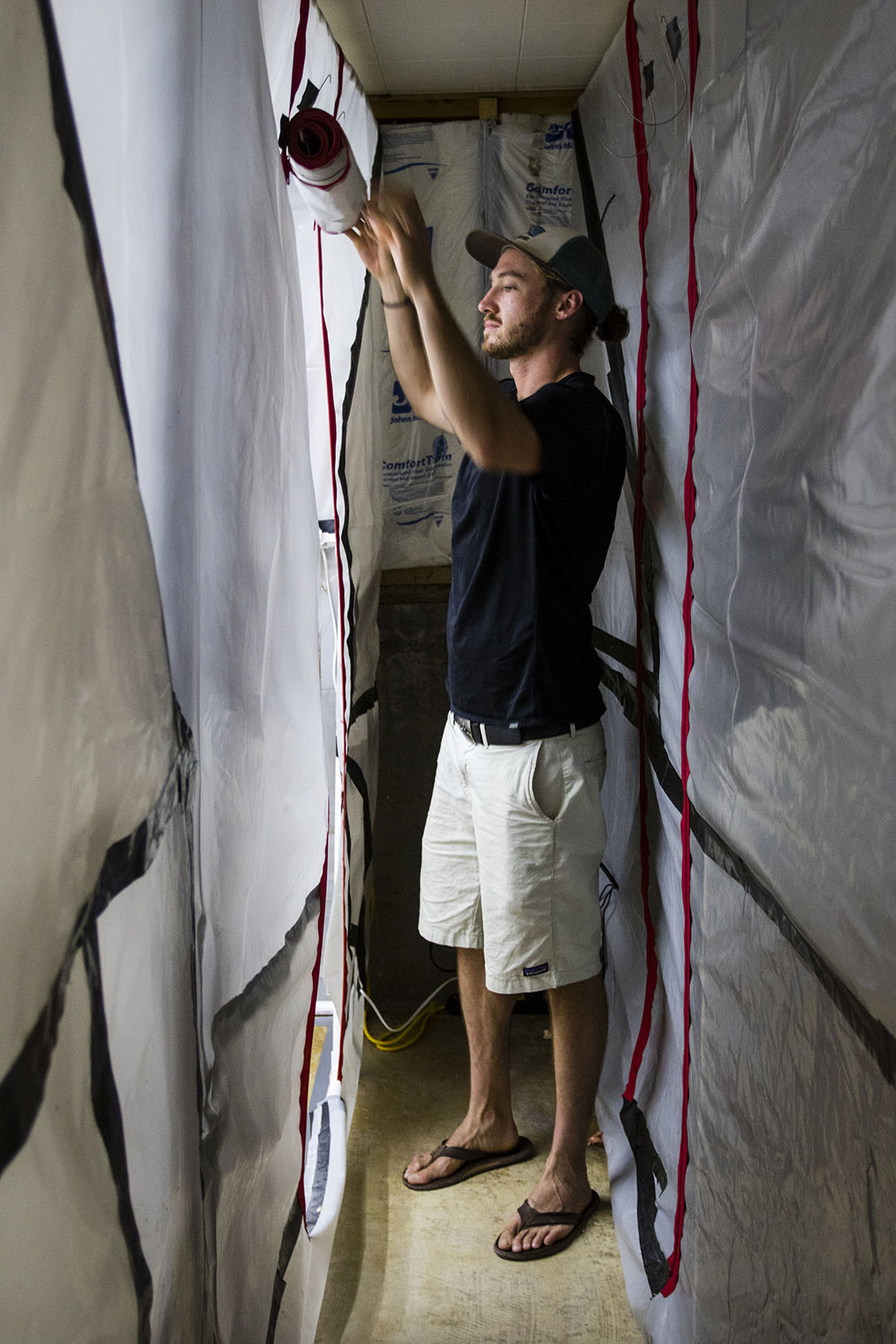Meet local farmers sprouting mushrooms in the high desert.
The dryness and extreme temperatures of the high desert certainly are not ideal conditions for humidity-loving mushrooms, but that hasn’t stopped local farmers from sprouting ’shrooms in highly controlled indoor growing facilities.
“I’m basically trying to recreate the rainforest down here in the desert,” says Walker Sauls, owner of Biggest Little Mushrooms in Reno.
After graduating from the University of Nevada, Reno, with a degree in environmental science, Sauls moved to Oregon, where he became immersed in the world of mycology.
“It started with me foraging for different species of edible and medicinal mushrooms out on the coast of Oregon, then I started doing some outdoor grows up there,” Sauls recalls.
After five years in the Pacific Northwest, Sauls returned to Northern Nevada just a month before the pandemic hit and began experimenting with growing mushrooms in a crawl space at his family’s home in Galena.
“I built out this little grow room trying to figure out all of the environmental controls that are required for growing in the desert in such a dry climate,” he adds.

A few months of experimentation later, Sauls moved his operation into the 1,200-square-foot basement of a residential property in Reno, and Biggest Little Mushrooms was officially launched. Using PVC piping and durable plastic sheeting, he crafted sealed rooms where he could control the conditions necessary for the different species of mushrooms to thrive. Currently, he grows pink, blue, and white varieties of oyster mushrooms, but he hopes to continue expanding with additional types of fungi.
Sauls mixes spawn — nutrient-dense grains inoculated with mushroom spores — into his custom-sterilized substrate of shredded hemp stalks from Sierra Nevada Hemp Co. in Carson City and spent coffee grounds from Swill Coffee and Wine in Reno. He packs the mix into his “fruiting columns,” made out of five-gallon food-grade buckets stacked and drilled with holes through which the mushrooms grow.

The columns first are placed in the colonization room, which has less fresh air exchange, lower humidity, and no light, for about two weeks while the mycelium takes over the substrate. Next, they are moved into the fruiting room, where there is more fresh air pumped into the room, higher humidity, and low light to trigger the growth of the mushrooms, just as in nature.
“There are a few things that are very important in order for mushrooms to be able to grow, and one of them is fresh air exchange. These rooms are constantly filtering air with a fan and ducting,” Sauls explains. “They also require around 85 to 95 percent humidity, ideally.”
To accomplish this, ultrasonic foggers vibrate in water reservoirs to create mist in the rooms for the mushrooms.
After about a week in the fruiting room, the mushrooms begin to appear and reach maturity after another seven days. Sauls harvests and regrows the mushrooms two to three times before starting the process over.

Fast and Fresh
Just across the California border near Bordertown, Nathan Rosenbloom has been finetuning his own process of growing mushrooms in modified shipping containers. After a hiatus to rework his growing systems, the owner of Loping Coyote Farms, a plant nursery and garden consultancy, brought back his company Mountain Mushrooms this summer.
Originally launched in 2016, Mountain Mushrooms was created to fill a gap in the region’s local food system. Using a highly controlled environment similar to Sauls’, Rosenbloom grows his mushrooms using various substrate mixes mostly composed of oak pellets.
“Freshness really is a big deal in mushrooms. The nutrients start falling off pretty fast when products are transported from long distances,” Rosenbloom explains. “Quality stays really high with a smaller local operation. It’s a whole different thing than the button mushrooms that are saggy and soggy by the time they get to you.”
Throughout history, edible mushrooms have been used medicinally and lauded for their healing properties by both traditional and folk practitioners. They are a good source of B vitamins, vitamin D, potassium, and antioxidant-rich selenium. Though extensive research still is being done, animal and cell studies have demonstrated that mushrooms can activate immune cells, macrophages, and free radicals that obstruct the spread of tumor cells and kill existing ones.
“Mushrooms themselves are endlessly fascinating in the scheme of life. The compactness of the systems, the challenge of doing it well, and the satisfaction of offering that food to the community all are ideas that are captivating,” adds Rosenbloom, who grows different varieties of oyster and lion’s mane mushrooms.
Keep It Simple
When it comes to incorporating more fungi in your cooking, the world is your oyster (mushroom).

Mushrooms are beloved by chefs and home cooks alike for their ability to impart the savory, rich flavor of umami — found in cured meats, aged cheeses, seafood, miso, and more — thanks to the presence of an amino acid called glutamate.
Though Rosenbloom often gets farmers’ market customers proclaiming his mushrooms are “too beautiful to cut up,” he’s quick to tell them about the ways his products can enhance their cooking.
“Shiitakes make incredible broths and sauces. Oysters are really good when cooked simply. Just sauté them with some butter and salt, and they can go in anything, like a pasta or just by themselves on a piece of toast,” he explains.
Sauls enjoys the nuanced flavors of the different oyster mushrooms, from the slight seafood flavor of the pink oyster and sweet, nutty taste of the golden variety, to the typical earthy umami flavor of the blue oyster and clean versatility of the white.
“Saturated with butter and green onions, they are great to put in tacos,” Sauls says. “I eat them with scrambled eggs a lot. I know a lot of people like to put them on top of steak dishes, integrate them into pastas, or put them on pizzas. They can add some flair and unique flavor to so many different types of food.”
Writer Claire McArthur would be happy if she never saw a sad, raw button mushroom on a salad ever again. Meaty oysters in stir frys, chanterelle pies, bacon-wrapped enoki, and shiitake risotto are where it’s at. You can reach her at Clairecudahy@gmail.com.
Oyster Mushroom Tacos
(courtesy of Walker Sauls, owner, Biggest Little Mushrooms in Reno. Serves 4)
1 pound oyster mushrooms, torn into small pieces
Olive oil
Pat of butter (optional, if you want to make vegan)
1 green onion, finely chopped
2 cloves garlic, finely chopped
Salt
1 package small corn or flour tortillas
1 tomato, finely chopped
1 white onion, finely chopped
1 bunch cilantro, finely chopped
2 limes, cut into wedges
1 avocado, finely chopped
Mexican blend or goat cheese (optional)
1 can black beans
Salsa
Prepare tomato, white onion, cilantro, limes, avocado, cheese, and salsa, then set aside to use as toppings.
Prepare green onion and garlic, then tear oyster mushrooms into pieces. Heat up butter and drizzle olive oil in a pan on medium-low heat and add mushrooms. Sauté about 10 minutes or until they have released their moisture and are beginning to crisp, then add green onions and sauté another minute or two. Add garlic and salt and sauté another minute, then reduce heat. While mushrooms are cooking, heat tortillas either in oven or on stovetop, and black beans for topping in small pot on medium heat.
Once everything is properly heated, put oyster mushrooms and chopped toppings onto each tortilla; add squeeze of lime, sprinkle of cheese, and spoonful of salsa to each taco, and enjoy! Serve warmed black beans on the side or in tacos.


